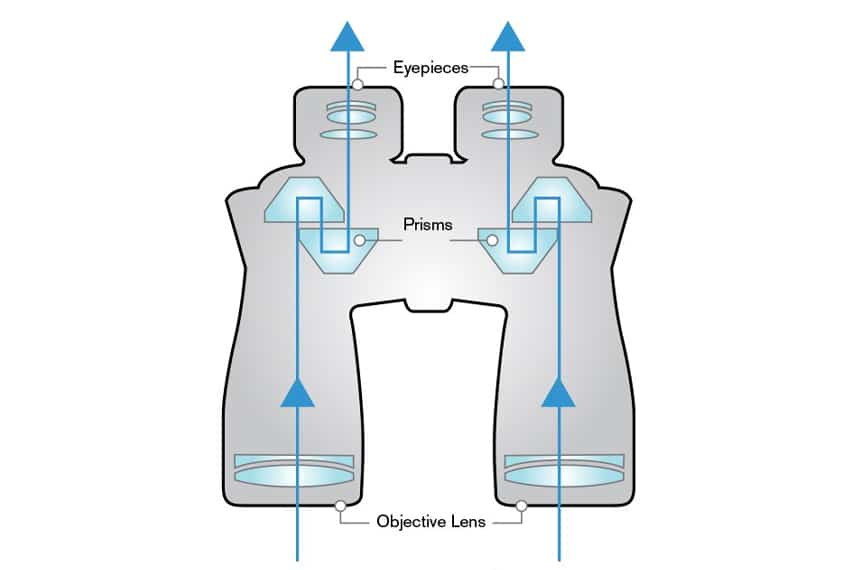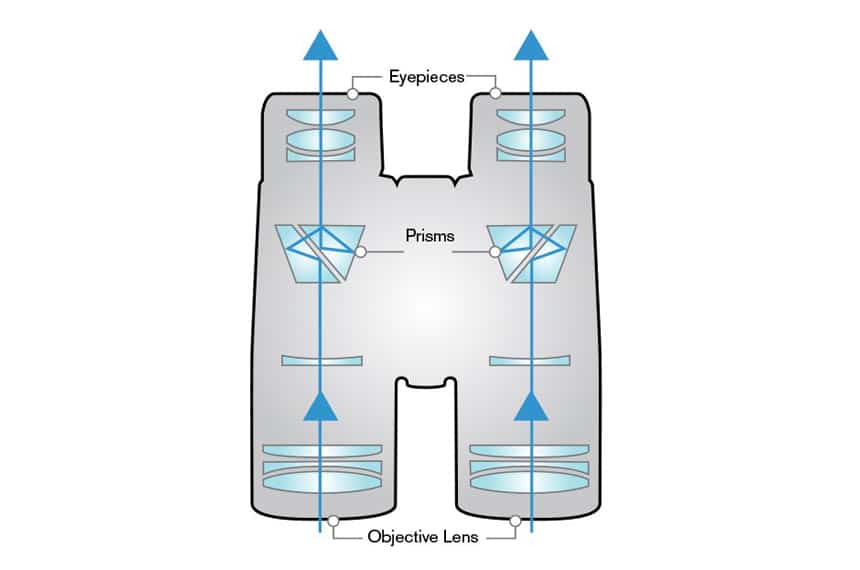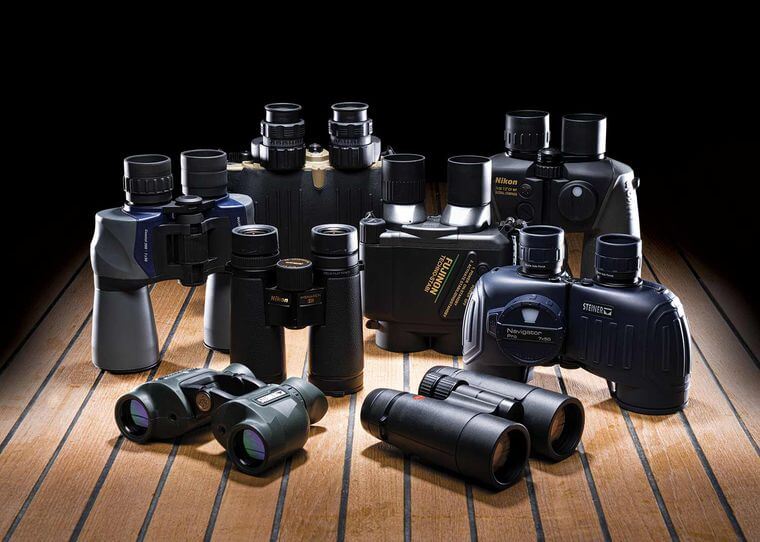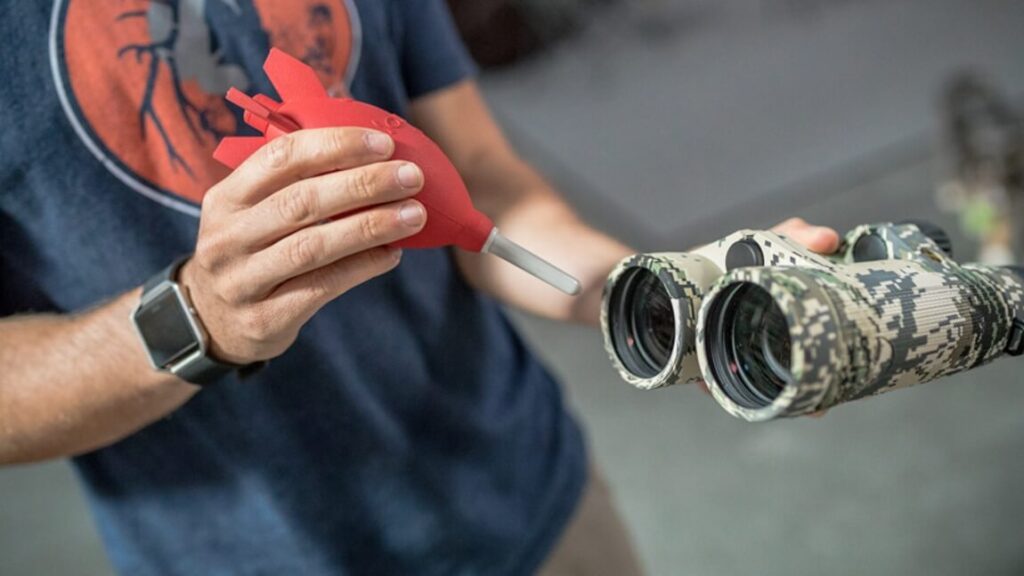

Buying binoculars for outdoor adventures and any other use may seem like an easy task, but it is not. The dilemma that most shoppers face is the choice between roof prism vs.Porro prism. You have to know the differences between these two varieties of glass that manufacturers use to construct the various models in the market. Reviews from experts and previous users indicate that Vortex 8×25 Solo Compact Waterproof Monocular S825 Color is one of the top-tier models available in virtual and brick and mortar stores that you should consider.
This unit is ideal for various applications, and the fully multicoated glass surface guarantees clear images. Other than the glass the producer uses in the design, there are other factors that you have to bear in mind. Shortlist all the models that capture your attention and review the prism specifications to ensure that the one you select will cater to your needs.
Understanding how prisms work in a binocular is the key to helping you pick a unit with specifications that you require for the application at hand. Prisms are large transparent wedges of glass in this category of optical instruments that mimic the action of mirrors without giving the reflection of the actual image. Prisms in the binoculars create a virtual image through the bending of light.

Porro prisms Trusted Source Porro prism - Wikipedia It consists of a block of material shaped like a right geometric prism with right-angled triangular end faces. In operation, light enters the large rectangular face of the prism, undergoes total internal reflection twice from the sloped faces, and exits again through the large rectangular face. Because the light exits and enters the glass only at normal incidence, the prism is not dispersive. en.wikipedia.org are the oldest alternative that you will find in the market. Ignazio Porro is the inventor of this type of prism that manufacturers have been relying on since 1854. If you choose to buy a model with the Porro prism, it is vital to confirm that it fits seamlessly well with the other parts of the binoculars for optimal performance.
The construction involves the horizontal placement of the two glass wedges side by side at a ninety-degree angle. This setup allows the image to be refracted from one prism to the other.
One of the prisms works as an amplifier while the other acts as the inverter. The image that goes through the ocular lens is magnified and corrected, giving you the view you are after. It is easy to distinguish between Porro prism binoculars, and the others that you will come across as the placement of the glass blocks have a zigzag or offset shape.
Porro prism binoculars stand out from the rest as they have more clarity and are appropriate for an assortment of applications, including but not limited to hunting, birding, and sporting events. Below we dive deep into the pros and cons of the Porro prism to help you make a well-versed decision.
Better in clarity –binoculars with the Porro prism give superior quality images at a relatively lower price. The wide separation of the objective lens increases triangulation, which improves depth perception. The best monoculars for bird watching that you will find feature the Porro prism design to enhance the essential functions.
Wider field of view – the glass elements in Porro prism binoculars offset from one another. This results in a greater depth and broader field of view. You get improved binocular vision with a Porro prism model for this reason. This enhances your overall experience when using the unit you buy.
Bulky –Porro prism binoculars are large and heavy due to the horizontal arrangement of glass blocks. You have to be careful when using any of the units in this category, as a single drop could ruin the binoculars.

Straight tube binoculars available feature roof prisms Trusted Source Roof prism - Wikipedia Characteristic for a roof prism is that the beam is split in half, with one half of the beam hitting first one face then the other face, while it is invert for the other half of the beam. Therefore, a roof prism can be used only with some distance to focal planes, or the “edge” of the roof would introduce slight distortions. Furthermore, the angle between the two faces has to be very close to 90°, or image quality would be degraded. en.wikipedia.org in their construction. French manufacturer Achille Victor Emile Daubresse brought this invention to the market. It has gained popularity ever since, and most of the compact models you will encounter feature this prism. A decent chunk of binocular manufacturers considers this alternative over the Porro prism alternative.
Two glasses are used to design the roof prism. One is in the shape of a roof edge, and the two meet in a straight line. This results in compact constructions that most producers of products in this category fancy. Some of the best binoculars for Alaska cruise feature the roof prism design for a seamless experience. The design elements make the end product sleek and appropriate for multiple uses. Versatility is a feature that has propelled the popularity of roof prisms among manufacturers and binoculars users.
Roof prisms benefit from the intricately coiled path that reflects light from the objective lens to the ocular.
Durable – the blocks of glass in roof prism binoculars are in a straight line. This has a host of benefits to the end product. The models that feature this design tend to last longer as the alignment of the glasses is tampered with easily. The design specifications require sturdy constructions, which guarantee that you can use the unit you buy for an extended period.
Compact – binoculars with the roof prism setup are streamlined than those with the Porro design. The glasses are in a straight line, making it possible for manufacturers to bring compact units to consumers without compromising quality. This is one of the desirable features that most people who engage in rigorous outdoor activities love in roof prism binoculars.
Costly – roof prism binoculars have a multifaceted light path that requires greater optical precision during production. This increases the overall cost of manufacturing and, by extension, the price of the final product.
The many types of binoculars you will come across have unique features to improve performance in specific conditions. Certain factors will dictate the alternative that you pick to ensure you get the best results. Here are the top considerations that you have to bear in mind.
Binoculars have an array of applications, and you ought to choose an alternative that is best for the task ahead. The prisms’ design influences the functionality, and you ought to review what option will be the best. For short-range birding, Porro prism binoculars are a suitable choice. This type of prism is also ideal for general outdoor, star gazing, day, and nighttime hunting. On the other hand, the roof prism models are suitable for long-range spotting and nighttime hunting. Evaluate your needs before purchasing any model to ensure that the key features align with what you need.
 Cost
CostPricing is another key factor that you have to consider as you go shopping. Generally, roof prism binoculars tend to cost more than the Porro ones. Manufacturers spend more to produce the roof models to get the sleek and compact design that improves the ease of use, which in turn informs the acquisition cost. Although Porro prisms cost less, there are certain disadvantages that you have to bear in mind to ensure they do not hinder what you want to achieve. You also have to consider shipping charges when buying from a virtual store.
According to reviews, the professional hands-free binoculars with green film coating are among the top-notch alternatives from a reputable manufacturer that you can add to your list for further assessment. This model features a unique design and multiple uses, making it a creative gift for family and friends. As you browse virtual and land-based stores for the perfect binoculars, remember to check the prism the manufacturer uses, which will help you make a well-versed decision.
If you are stuck choosing between roof prisms vs. Porro prism, use the purpose of the binoculars as a guide to help you decide. Other factors such as price, quality, manufacturer, and range of applications will influence your choice of one model over the other. Understanding the basics will help you get value for your money alongside an unforgettable experience when using your new pair of binoculars.





